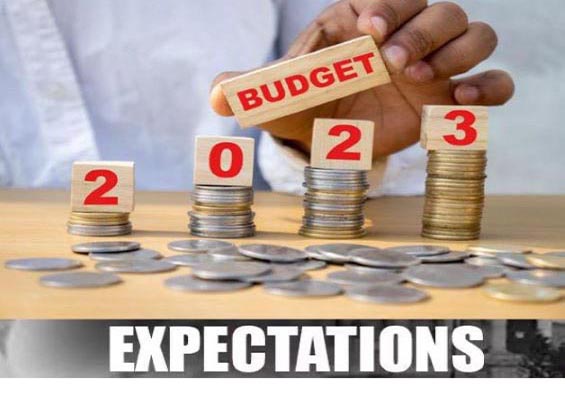
The Union Budget 2023–2024 will be presented in Parliament on February 1, 2023, by Finance Minister Nirmala Sitharaman. This year, the budget is likely to be growth-oriented with a focus on capex, manufacturing, infrastructure, and rural economy. Here are expectations of different industry players from the upcoming budget.
Mr. Vikram Gulati, Country Head and Executive Vice-President, Toyota Kirloskar Motor

“Based on last year’s progressive Budget and various Government interventions, the auto industry witnessed a healthy growth. In the upcoming Union Budget, given the macro-economic scenario, our expectation is that the Government would continue to retain growth orientation. Further, continued economic reforms and infrastructure upgradation along with special thrust for the rural economy as well as keeping a check on rising interest rates would be important for sustaining good demand.
The Government has also been pushing for greater self-reliance while directing the future growth towards greener and more environment friendly technologies. For this, multiple green technology pathways are being encouraged to achieve national goals of fossil fuel and carbon emission reductions. This includes incentives provided under various PLIs, policy support extended for electric mobility, alternate fuels like Ethanol and Bio-CNG as well as the recent announcement of the ambitious hydrogen mission. We are hopeful that keeping in line with this, the policy initiatives will continue in order to accelerate rapid consumer adoption of green technologies while we, at TKM, would continue to support the Government’s efforts towards shifting the economy and transportation sector towards a greener future that is less dependent on fossil fuels.
On a mid-long term perspective, we also hope that the Government would continue in its efforts to invest towards upgradation of health infrastructure, improving quality of education and towards upskilling which will strengthen the ecosystem to keep pace with the rapid technological transition.”
Mr. Satyakam Arya, MD, Daimler India Commercial Vehicles

“We anticipate FY 2022-23 to be an inflection point for India as in spite of the pandemic and supply chain challenges over the past 2-3 years, India has demonstrated incredible resilience and a hunger for growth. India’s transformation is a highly encouraging opportunity for the industry as a whole because we clearly want to become the destination that global businesses desire, especially when economies in developed markets are showing signs of a slowdown. While, as the slowdown in global economies may ostensibly influence the pace of India’s economy in some ways, the push to grow from our side is much stronger and India’s strategic vision will keep us in good stead.
Rapid development of urban and rural infrastructure is expected to give a major boost to the overall economy, consumption of raw materials like steel and cement is expected to be strong and as a result this would increase demand for heavy-duty trucks. Rural demand is expected to be strong and resilient, increase in e-commerce is keeping consumption active and growing at a retail level, all of which will provide impetus to demand for medium and small vehicles.
We are also expecting that more sectors would be brought under the PLI umbrella scheme which has given a lot of confidence to the industry since it was introduced. Supply chain issues over the past years was a big learning and an even bigger opportunity for India to stand up to the challenge and become the supplier to the world. With many Free-Trade-Agreements on the cards, India’s push towards exports would be a welcome opportunity. All in all, given the big push towards strengthening India’s economy by developing global standards of infrastructure, opening the gates to technology development, expanding manufacturing strength to multi-tier markets within India, the Commercial Vehicles industry has a big role to play in building India’s economic identity on the world stage. Of course, implementation of comprehensive strategies is the key to success and the industry would be keen to participate in this exercise. Year 2023 is also an important year for the Indian populace to participate in the direction the country will take to create a solid future.”
Nagesh Basavanhalli, Executive Vice-Chairman, Greaves Cotton Limited

“India’s EV ecosystem is proliferating, thanks to the government’s beneficial measures and the increasing adoption of sustainable mobility by consumers. The EV industry will stand to gain further from policies that foster long-term growth in the upcoming Union Budget 2023 – 24. These include a uniform 5% GST rate on all components of EV to avoid an inverted duty structure, which blocks funds in working capital for the EV companies. The benefits of the production-linked incentive scheme must be expanded to suit fuel-agnostic policies as well. The EV industry saw momentum in 2022, reaching one million unit sales in the last year, as per VAHAN data. It is essential that EV adoption continues to grow with continued subsidy allocation for OEMs, till the market reaches an EV penetration of 8-10%.”
Mr. NK Minda, CMD, Uno Minda Ltd.
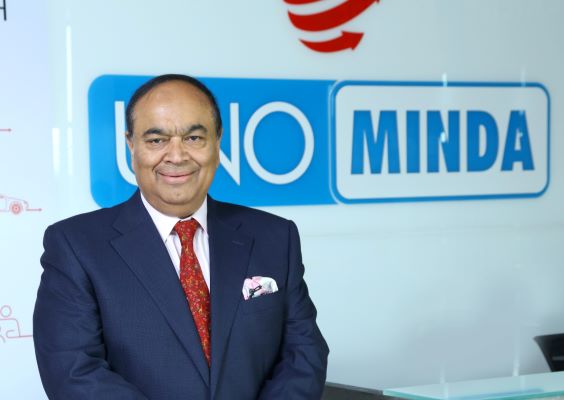
“The government has taken lot of good initiatives in the last few years, the Production Linked Incentive scheme for auto component industry is one among them. But there are few suggestions that can further drive auto component industry ahead. First, improving GST structure by bringing all components tax structure at standard 18 percent to avoid dispute and ambiguities. Secondly, incentivising R&D in the sector by providing tax benefits, as the EV segment needs support in terms of R&D, this will boost the make-in-India and Atmanirbhar Bharat vision.”
Mr. Ketan Mehta, Founder & CEO, HOP Electric Mobility, lists his thoughts

Streamline the PLI scheme, thus bringing clarity in the provisions and related benefits .
FAME II scheme to be defined with more clarity and inclusive to ensure innovation in product development and enhance EV adoption.
Level playing field between established players and start-ups in the segment. The applicable GST levied needs to be reformed and rationalised – anticipating a curtailment in the current GST on lithium-ion battery packs and cells from 18% to 5%.
Further, boost in the charging infrastructure development – PPP model could be looked at more comprehensively for rapid deployment.
Promote the universal battery charging and swapping infrastructure for ease of use.
Mr.Vikas Gupta, Founder & CEO, Sampoorna EV and Founder & Former CEO, e-Ashwa Automotive.

Buying from an Indian component manufacturer is costlier since most items attract 28% GST whereas Importing attracts 15% Customs and 5% GST means net 21% duty against 28%. Importing on just duty terms is 6-7% cheaper. Govt should rationalize it.
Mr. Hyder Khan, CEO Godawari Electric Motors
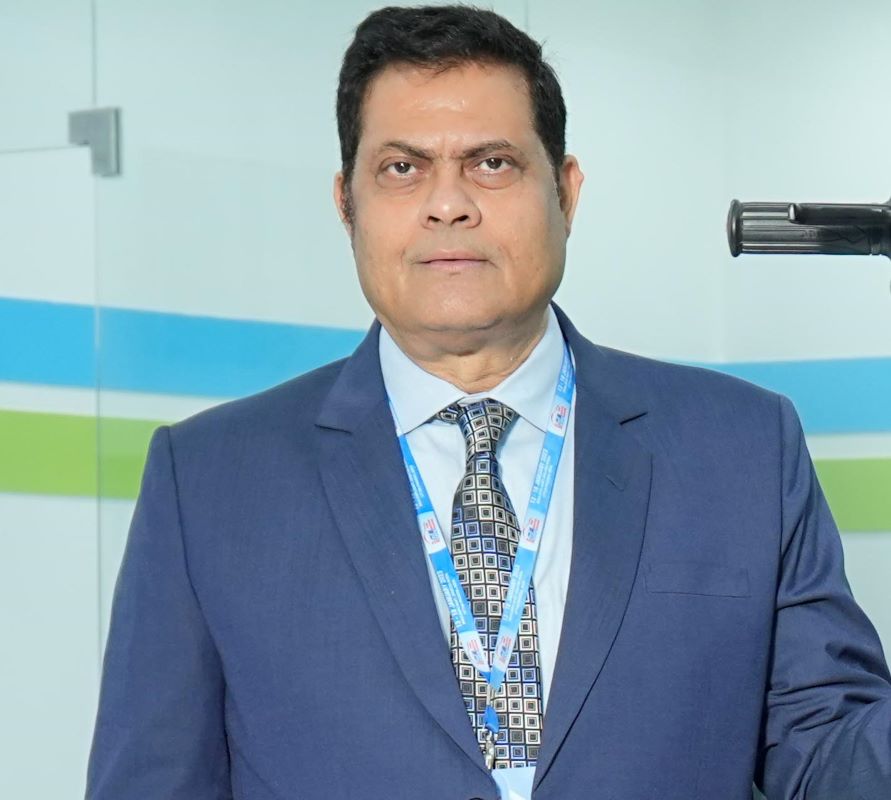
“The government has been supportive of the EV industries with the constant policy push in the last few years. As the ambit of EVs expands, we hope that the upcoming Union Budget considers increasing the FAME-II subsidy for the e-auto (L5M) segment to Rs. 15000 per kWh or 40% of the ex-showroom cost, whichever is lower in line with EV two-wheelers. The e-auto segment has undergone rapid electrification transformation and will prove to be a major source of enhancing last- mile connectivity. This will lead to improving affordability and accelerate EV adoption further in the country.”
Mr. Amit Gupta, Head- Energy Infrastructure Solutions, Delta Electronics India
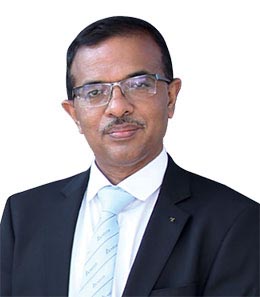
Delta firmly believes that the Union Budget 2023–24, which will be unveiled at a pivotal time of geopolitical unpredictability, high inflation, and sluggish global economic growth, will aid the EV industry in moving forward and accelerating the adoption of EVs.
E-mobility will advance in India as a result of newly announced government measures to improve the infrastructure for charging. Grid connectivity will be improved, and installing infrastructure for public charging will be made simpler. However, the part needs a bigger push. The industry needs more assistance to encourage private enterprises to build charging infrastructure, which will facilitate the widespread adoption of EVs.
Infrastructure for charging requires capital-intensive design and installation costs. The sector’s top aim is to keep capital costs as low as feasible. The proper course of action for making it easier to install charging infrastructure is to facilitate grid connectivity, but it is crucial for the sector that the government also subsidizes electrical connections and fixed load fees for EV charging point operators.
The government has encouraged the use of charging stations by setting the GST at 5% on the sale of charging stations, but the GST rate is 18% when using the infrastructure. Given that many people utilize these charging stations and do not qualify for an input tax credit, the government must reduce this GST to 0%, just like it does with the sale of energy.
Making low-cost renewable energy available: The transition from expensive fossil fuel-based power generation to affordable renewable energy will aid in making EV transportation really viable. By supporting strategies like open access to solar energy, it will be possible to increase the supply of RE electricity while lowering operational costs.
Revenue generation: Installing EV charging infrastructure requires significant investment. The industry can be made more profitable in a number of ways, including by enhancing promotion, introducing smart charging services, and investigating network interoperability to lower latency, increase revenues, and lower expenses.
Make charging stations a part of green building: India is putting an emphasis on smart cities and green construction. The proper charging infrastructure is crucial for both new green real estate projects and existing real estate including industrial, commercial, and residential complexes. This will promote sectoral growth and open up opportunities for the industry to generate income.
Atul Bansal, CFO, Yokohama Off-Highway Tires

“As we come to the budget, we are looking at certain things in the Tyre Industry like, we would like remission of duties and taxes with relation to exports to apply both to SEZ and EOU. Second is, Production Linked Incentive Scheme to be introduced for tyres as we see big opportunity over there for the growth.”
Mr. Uday Narang, Founder and Chairman, Omega Seiki Mobility
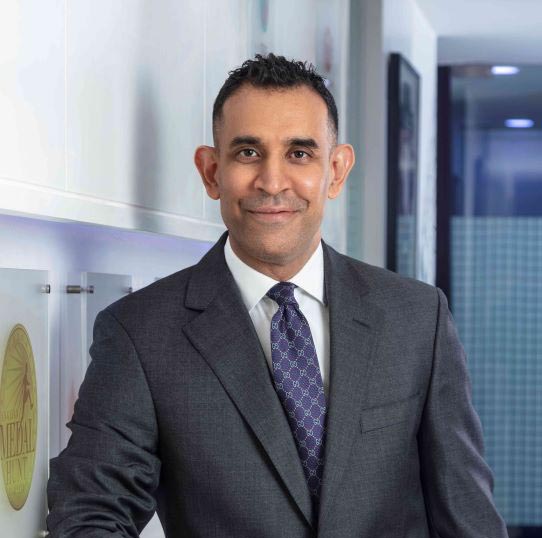
In order to further enhance EV adoption in India, EV-financing will become the biggest enabler. Attractive economics and push by governments has already increased the demand for EVs substantially. At OSM we sincerely believe that the Indian Government is the most progressive Govt. and we have seen tremendous support from the Policy Makers and the Govt. both at the union and at state level and we applaud the same.
We have the following expectation which we feel that would help India to further accelerate the EV Adoption and this achieve the Hon’ble PMs goal of cutting down emissions by 2030 and reaching our Goal of Net Zero well before 2070.
1. The first and foremost is the standardization of battery voltages and form factors
2. Extension of FAME II subsidy to promote conversion of ICE vehicles to electric.
3. Commercial EV segment, which is expected to be a key growth vertical, is faced with a lack of financing options. All the national, state and cooperative banks we expect Govt. to ensure in providing financing at equivalent rate of ICE engine Vehicle
4. As EV manufacturers, we expect the government to correct the inverted duty structure. As of now, GST input on raw materials is north of 18%, while outward supplies stand at 5%. By amending this framework, the government can help manufacturers like us to optimize cash flow
5. There is a tremendous requirement to mandatorily ensure EV charging infrastructure to be set up in all existing and upcoming housing projects and commercial establishments. Also, incentivising setting up EV charging stations in existing residential areas, housing complexes and commercial establishments will go a long way in setting up the infrastructure
6. Testing equipment’s standardization in the Battery packing norms to ensure Safety and Quality
Pre-budget quote on behalf of Matter

India’s economy has shown remarkable resilience while facing challenges from inflation and supply chain disruption, among other global macroeconomic issues. India is now among the top three auto markets in the world. With the overall two-wheeler market in India reaching a volume of 18 million units in 2022 and looking at the climate challenges the transition to EV is critical now. For the rapid uptake of EV adoption in India, the EV industry needs the best support through budgetary provisions, and I’m looking forward to it.
PLI Scheme to be made more inclusive of new businesses: The government launched several initiatives, including the PLI scheme, to enhance the country’s manufacturing capability. In India, the start-up ecosystem is leading the EV revolution from the front, but most of them have not benefited from the PLI scheme. PLI scheme can be made more inclusive, I am hopeful that government with award start-ups much needed support in order to continue leading the EV revolution granting special incentives and subsidies, and relax regulatory norms to create a more favourable business environment.
Fame II Tax Subsidy: Given the inflation and long cycle of cost optimisation, the support through FAME II subsidy is very critical for long period in future, Also as Motorcycles would be a critical component of wider EV transition, the cost economics of Motorcycles should be at the centre of FAME consideration including increasing the limit of eligibility to FAME from 1.5 Lakhs Ex-Factory price to 1.75 Lakhs or 2 Lakhs is a need of the hour to encourage tech advance product development for consumers benefit and placing nation at the world leadership through best product innovations.
Reduction in customs duty: While local manufacturing of Cells scales up in the future, mean time a reduction in customs duty on the import of lithium-ion cells would be critical to accelerate the adoption with the scale up of production, helping reduction in the overall upfront costs of battery production and the cost of acquisition for electric vehicles in India.
GST on stationary energy storage batteries: Since lithium ion batteries are key for energy efficiency and clean energy, I would urge the government to create tax parity for lithium Ion batteries in line with EVs, i.e., 5% GST on Lithium Ion batteries used in stationary energy storage applications, to help accelerate the nation’s clean energy goal.
V G Anil, Head of Operations, ARENQ

In addition to calling for a #MakeinIndia circular economy, the prime minister correctly highlighted that India needs to create energy security self-reliance. The circular economy of battery raw materials will improve India’s manufacturing and energy security by leaps and bounds. This transformation may be substantially accelerated by government support, which we hope to see in the budget this year.
Rajat Verma, CEO & Founder, Lohum

The Prime Minister has rightly acknowledged that India needs to develop self-reliance in energy security, and called for a #MakeinIndia circular economy. A circular economy of battery raw materials will boost India’s energy security and uplift domestic manufacturing. Government support can greatly accelerate this shift and magnify its rewards, which we hope to see in the budget this year.
Hiranmay Mallick, CEO & Co-Founder at Tummoc – A public transit app

“2022 was a year of tremendous progress in transit and mobility. There was a significant spike in digital adoption, and a number of new MaaS players entered the market, a large portion of which were EV players.
In 2023, transit in India is going to significantly level up, with seamless solutions transforming the way our daily commuters get around. I can say with confidence that in 2023, a number of Indian metropolitans will get access to a seamless solution to inaccessibility to information, first and last-mile connectivity and the need for digital ticketing. Without getting into too much detail, a revolutionary solution is being built at the moment and will transform mobility in India very soon.
To facilitate this progress, there are certain expectations and hopes from the coming year’s budget such as incentivizing initiatives that promote last-mile connectivity, recognition programs for sustainable/public transport startups to encourage better relationships, carbon trading programs/funds to promote shared and sustainable mobility, incentives for retrofitting conventional vehicles to electric vehicles, etc.”
Sravan Appana, CEO at iGowise Mobility – Mobility & Transportation Company

“The union government has been consistently proactive in creating policies for rapid adoption & indigenization of sustainable mobility alternatives for urban air-quality and climate resistance. These new-age sustainable vehicles come with smart connected features that provide us the opportunity to combat a couple of more crucial sticky problems. Road accidents & Traffic decongestion!
Following the national road safety awareness week in January, it is time for sweeping reforms for safer mobility especially for two-wheeler users who are 30 times more prone to road related fatality. 2W are not just a medium of transport, but also a medium of livelihood for 90% of the Indian households. Vehicle telematics, 5G communication, crowd-sourcing data, AI powered analytics etc. provide opportunities to encourage better ride behavior and to identify infrastructure fault lines.
Advanced drive assistance systems provide help in predicting & pre-empting accidents. Promoting state-of-the-art automobile engineering technologies can help in safer & more stable bikes & scooters. Size & occupancy based congestion road tax models encourage lighter, slimmer & low footprint vehicles for urban commute. Self-driving auto-summon technologies help enable shared mobility for optimal vehicle utilization & traffic decongestion.
India can quickly transform itself from having the most deaths on roads to one of the safest by implementing few simple low-hanging yet path-breaking reforms.”
Sakshi Vij, Founder and MD, Myles Cars.

The Electric Vehicle adoption is at an inflection point in India. While the commercial/logistics sector has seen a good adoption, the individual vehicle owner is still on the fence. If the budget addresses issues such as high initial cost of ownership through incentivising individual vehicle owners the EV adoption will see a boost. Ease of registration, electric bill incentives as well and carbon footprint saving incentives could be a step in the right direction for individual travelers as well.
Gaurav Rathore, Co-founder, EVeez

In addition, it must also include electric vehicles which are currently sold without a battery and which rely on battery swapping networks so that EV adoption (especially by commercial fleet operators and logistics companies) through newer operating models like electric mobility as a service (eMaaS) can be accelerated.
Secondly, it is imperative that financing of EVs be brought under the ambit of Priority Sector Lending (PSL); primarily as upcoming EV businesses encompass two sectors under PSL i.e. renewable energy and MSMEs. Public and private sector banks have generally been slow to financing EVs for business and commercial use; and bringing this under PSL will accelerate EV adoption to a critical mass of the population.”
Dr. Rishi Bhatnagar, President at Aeris Communications

“In the upcoming budget 2023-2024, the EV sector (including ancillaries) is looking forward to a slew of SoPs, including the extension of the Faster Adoption and Manufacturing of Hybrid and Electric Vehicles (FAME-II) scheme beyond 2024, and a reduction of GST. As India is poised to become one of the world’s largest electric two-wheeler markets, the GST for last-mile delivery services needs to be reduced. Furthermore, this year, I would urge government to implement the battery-swapping policy which it had committed to in the last year’s budget. Battery leasing through the battery swapping infrastructure will help EV owners save money on battery purchases. Stable and stronger policies on lithium-ion battery recycling and promoting rebates for R&D related to battery recycling must be taken into consideration this year. Overall, my expectation is that the Union Budget would aim at long-term holistic growth for the automobile industry focusing more on investments in EV infrastructure, reducing GST on swap batteries, incentivising charging, and swapping infrastructure, creating job opportunities, and introducing new and emerging technologies. Along with this, Government’s continuous support of localisation and the transition to green mobility will give an impetus to this sector as a whole.”









